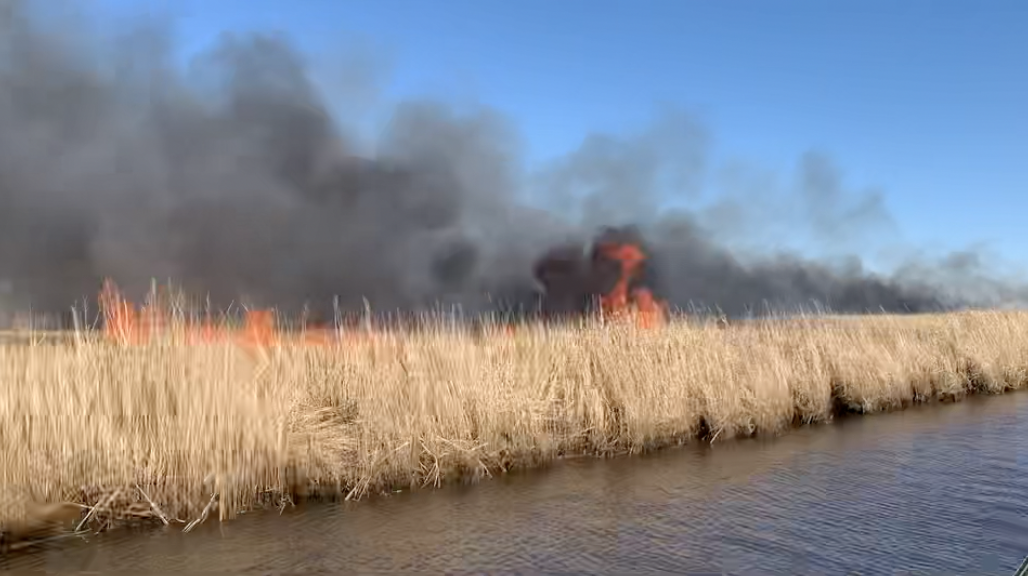Prescribed Burns Consume 1,700 Acres of Marsh

(But it’s a good thing)
By Cheryl Costello
A passerby could be quite alarmed by the sight: nearly 2,000 acres of marshland in the treasured Blackwater National Wildlife Refuge going up in flames. In the fire at Blackwater that was set intentionally last week, no one will be charged with arson. And officials are offering a reward—to the environment.
It’s an age-old technique environmentalists use to build the marsh back up better than before.
“The main focus in burning marsh grass is the ability to cycle nutrients in that habitat, which ultimately allows the burnt grass to come back stronger and healthier,” explains Eric Kronner, a prescribed fire specialist at the wildlife refuge in Cambridge, Dorchester County.
Kronner and his team are burning the marsh by land and by boats to access tough-to-reach areas. This operation is called a prescribed burn. Humans set the fire, but Mother Nature has to dish out the right prescription to maintain control of the burn.
“When it comes to burning marsh, we like strong winds because the fuel is literally on top of water. You have to have a strong wind in order to push it across the grass,” Kronner says.
How does his team make sure the fire doesn’t grow out of control? Kronner says they strategically light it in a location they know the wind will push the flames the right way. There are priority areas—some near private homes and property next to eagle nests.
“We’ll light [the grass] and in a minute it burns down. There is nothing left and it moves on from that area … It consumes everything it’s going to consume and then it runs into the water and it’s out.”
This year, the team is trying to burn about 1,700 acres at Blackwater.
The Marshmaster is a unique-looking mini-tank that burn specialists drive over marshland, with tracks that keep it from getting stuck. It can also float. While the equipment may be newer, controlled burns at the wildlife refuge are not, Kronner tells us.
“Whoever is managing [Blackwater] at the time has been burning it. That goes back to Native American encampments, they burnt the marsh. Early settlement periods, they burnt the marsh. And we’re just kind of keeping that history going.”
So is there environmental evidence of the benefits of these fires? Blackwater says there are several studies showing that annual burning of the marsh can help maintain its position within the ecosystem. “The stronger those roots are, the more likely those roots will stay where they’re at,” Kronner says.
So if you’re visiting the popular national wildlife refuge and you see parts of the marsh going up in flames, know that the fire is under control—it burns to better the environment.
